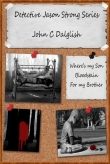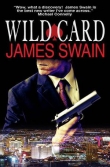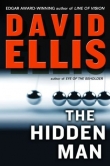
Текст книги "The Last Alibi"
Автор книги: David Ellis
Жанры:
Триллеры
,сообщить о нарушении
Текущая страница: 17 (всего у книги 31 страниц)
60.
Jason
When court reconvenes, the prosecution tells the judge that they’d like to read a stipulation to the jury about cause of death. There’s no point in our denying that Alexa was shot through the back of the throat with a single bullet from my gun, and there’s no doubt that this gunshot was the cause of her death. The jury has already seen the grisly crime scene photos, so there’s little point, from Roger Ogren’s perspective, in putting the medical examiner on the stand. This was the point made by Judge Bialek, who, like any judge, would rather that trials move more quickly than slowly and who is always happy to embrace a stipulation that spares her precious courtroom hours.
“Members of the jury,” says Judge Bialek, “the prosecutor, Mr. Ogren, is going to read a stipulation to you. A stipulation means that the parties have agreed that the facts stated to you are, in fact, true. You may accept these facts as true. You may consider them as evidence every bit as much as you consider any other information you receive in this matter. Mr. Ogren, you may proceed.”
“Yes, Your Honor.” Roger Ogren stands before the jurors and reads from a piece of paper, as if he were unfurling a scroll and announcing first, Hear ye, Hear ye.
I take Shauna’s hand in mine. We’ve agreed that, during this one portion of the evidence, it is best that we hold hands, given that the jury’s eyes, not otherwise diverted by someone’s testimony or an e-mail on a screen, might likely move to the defense table.
“The parties stipulate that on Tuesday, July thirtieth of this year, Alexa Marie Himmel suffered a gunshot wound to the throat while in the living room of the home belonging to the defendant, Jason Kolarich. That gunshot was fired from behind her, from a distance of approximately ten feet. The bullet severed Ms. Himmel’s fourth cervical vertebra, and death was instantaneous. The county medical examiner has conducted an autopsy and routine toxicological examination and found no other evidence of any foul play, injury, or illness that would have caused Ms. Himmel’s death.
“The parties therefore stipulate that this single gunshot wound was the proximate cause of Ms. Himmel’s death, and that the manner of death was homicide.
“The parties stipulate that Ms. Himmel’s time of death occurred between the hours of nine P.M. and midnight on Tuesday, July thirtieth of this year.”
The stipulation was my idea. We let Roger write the first draft, and I added a couple of facts before letting Roger take another turn at it. We could have scrapped the whole thing and allowed witness testimony to cover this, but we had the judge on our side wanting to circumvent hours of testimony, and a prosecutor is always happy to have stipulated evidence. Why not? Even with rock-solid witnesses, you never know what might happen. A cop or coroner might have a car accident. They might slip up on the stand somehow, in some way, and open a door for an ambitious defense attorney. Fear of the unknown is what keeps trial lawyers up at night.
But more than the prosecutor or judge, the person who wanted this evidence down in writing most of all was me. I want the jurors to be able to take this information back with them during deliberations.
Because it highlights the first mistake the government made.
61.
Jason
Officer Janet Brannon, another member of the County Attorney Technical Unit, takes the stand at eleven. Her testimony will be short and sweet. Katie O’Connor is hoping to get her in before lunch so the government can get their next witness, an FBI agent, on and off before the end of the day. Judge Judy is hoping for the same thing.
“As part of the investigation,” says O’Connor, “did you consider the possibility that someone other than the defendant shot and killed Ms. Himmel?”
“Yes, we did. We looked at many things.”
“Did that include fingerprinting the defendant’s home?”
“Yes, it did. I oversaw the process. We took prints from every surface on the first floor, including the door and doorknobs on each side. We took prints from the garage. We printed everything on the second floor, not only the living room area where the murder occurred, but everywhere. And for good measure, we printed the third story of the town house, as well.”
“Is there anything you didn’t print?” O’Connor asks.
“If there is, I can’t think of it.”
“And whose prints did you find?”
“We found prints belonging to the defendant and prints belonging to Alexa Himmel.”
“Any others?”
“None that we could match.”
It doesn’t hurt that I have a cleaning lady who comes once a week, a nice Polish girl named Dita, so presumably the place is fairly wiped down at any point in time.
“We checked for the presence of any shoe prints or markings and found nothing other than a shoe that matched the defendant’s, a partial shoe print in the foyer by the garage-access door. Otherwise, no shoe prints.”
“And what about the handgun that fired the bullet that killed Ms. Himmel?”
“We examined the firearm and attempted to extract fingerprints.”
“What was the result, Officer?”
Officer Brannon says, “There were no fingerprints found on that weapon.”
“Is that unusual, in your experience?”
“Not especially. Prints don’t stick on firearms nearly as often as people think.”
“Did you find anything else while examining the firearm?”
“Yes,” she answers. “We found traces of isopropyl alcohol and benzalkonium chloride on the firearm in several places. These are chemicals found, among other places, in your typical disinfectant wipes people keep in their homes.”
“Did you find any such disinfectant wipes in the defendant’s home, Officer?”
“Yes, we found a canister of Clorox disinfectant wipes, fresh scent, on the counter.”
“Did you do any further follow-up?”
“Yes, we did,” says Brannon. “In the garbage can in the defendant’s kitchen, we found a used disinfectant wipe. It was still damp.”
“I see. And what did all of this lead you to conclude?”
Shauna could object. But she won’t. The jury’s thinking it already.
“Before the police recovered that gun, someone had wiped it down with a disinfectant cloth,” says the officer.
“Thank you, Officer. No further questions.”
“Someone . . . wiped down the gun . . . with a disinfectant cloth,” says Shauna. “Well, let’s talk about the gun, Detective.”
“Officer,” Brannon corrects.
“My mistake. Officer.” Only I know Shauna well enough to know that her mistake was intentional. “Officer, this handgun was found by the police resting on the floor in my client’s living room, wasn’t it?”
“That’s my understanding, yes.”
“So . . . it wasn’t exactly hidden, was it?”
The prosecutor, Katie O’Connor, moves in her chair but doesn’t object. She could. Roger Ogren would, if this were his witness. But O’Connor probably figures that we haven’t been obnoxious with objections, so she won’t be, either.
“Hidden? I wouldn’t call it hidden, no.”
“It was in plain sight, for all to see.”
“That’s my understanding.”
“In fact, the first thing Jason did when the police arrived was tell them about the gun. Isn’t that true?”
“I don’t know that for a fact, but I’d heard that, yes.”
“This was my client’s gun, isn’t that right, Officer?”
“Yes.”
“The serial number on the gun wasn’t scraped off, was it?”
“No, it was not.”
“It was incredibly easy for you to type a number into a database and determine that this gun belonged to Jason.”
“It was, yes.”
“If Jason hadn’t already said so himself.”
The witness doesn’t answer. That’s fine by Shauna.
“So Jason wasn’t trying to hide the presence of the gun or the fact that it was his, was he?”
“As far as I know, no, he wasn’t trying to do that.”
“Would it seem unusual to you that my client might handle his own weapon from time to time?”
Again, O’Connor considers objecting, but she probably thinks that Shauna’s actually helping her, planting an image in the jury’s mind of me holding that gun, being comfortable with it, maybe even playing pretend with it in the mirror, like Robert De Niro in Taxi Driver.
“Would it seem unusual that your client would handle his own weapon from time to time . . . No, that wouldn’t be unusual,” the officer answers. “It’s his gun.”
“Exactly. So given that it wouldn’t be suspicious in the least for Jason’s fingerprints to be on a weapon that he’s owned for over a decade, can you think of any possible reason why Jason would wipe down that gun?”
The witness has no answer for that.
It’s a strong point, and the right place to end. If I was the one who shot Alexa, why would I wipe down the gun, when my prints being on the weapon wouldn’t be suspicious in the slightest, and when I knew, as a longtime prosecutor and now defense lawyer, that trace evidence of the disinfectant would be found on the gun?
Why would I do that?
“Officer,” says Katie O’Connor on redirect, “you’ve been on the police force for how long?”
“Six years, five months.”
“And in your experience, do even intelligent criminals sometimes do stupid things?”
“Objection,” says Shauna.
“Sustained.”
“In your experience, do criminals under incredible stress do stupid things?”
“Objection.”
“Sustained.”
“In your experience, would a criminal ‘under the cloud of addiction’ to OxyContin do something stupid?” Using the same phrase Shauna used, mocking her.
“Objection.”
“Sustained. Ms. O’Connor, this line of inquiry is finished,” says Judge Bialek.
“So am I, Judge,” O’Connor says, sitting down with satisfaction.
The point of an adversarial criminal justice system is for each side to put forth their case, and somewhere in the middle, within that tug-and-pull of competing theories, emerges the truth. This is one of those times. They’re both right. Shauna is right that it wouldn’t make sense for me to clean off that gun with a Clorox disinfectant wipe.
And Katie O’Connor is right that I did, in fact, do that very thing.
62.
Jason
Court reconvenes after lunch. Roger Ogren stands, flattens his tie, buttons his coat, and says, “The People call Special Agent Dennis Jumer.”
The local cops still bring in the FBI a lot to assist with cell phone technology, most notably tracking the movements of suspects by their cell phone usage. We used this historical cell site analysis on occasion when I was working Gang Crimes at the county attorney, but nowadays they’ve taken this stuff to an art form. There are agents like Jumer who basically do nothing else but check cell phone records and put dots, or circles, on a map.
“I’ve been a special agent with the FBI for almost eleven years,” he tells Ogren. “I’ve been assigned to our Narcotics and Firearms Task Force for the last five.”
“As part of your duties, do you analyze cell phone records?”
“Yes, that’s the largest part of what I do these days. I typically do historical cell site analyses on cell phone records.”
“Why do you conduct historical cell site analyses, Agent Jumer?”
“The purpose is to determine the approximate locations of cell phones at the time the calls were placed that are detailed in the records.”
A cell phone is a radio, and when it’s used it sends out radio frequencies in all directions. It will hit multiple towers belonging to that service provider, and that provider will have a switching channel that will pick which of its towers should provide service to the cell phone. Each tower has its own identifier, and the service provider records that particular tower in its call detail records.
So when you call somebody on a cell, the FBI can go back later and say, at this day and time, you initiated a phone call, and this was the tower that provided service to that phone. The tower providing service is usually the one that’s closest to the cell phone’s location, but not always, especially in an urban area with high call traffic. So it’s not an exact science.
If this were an area of contention with us, we’d have some basis to go after this witness. In fact, as a defense lawyer, I once had Dennis Jumer on the stand for half a day, berating the FBI’s methodology and criticizing them for not using triangulation or GPS, which are more accurate. I assume that Jumer remembers that day, and me.
Agent Jumer talks for a while about his credentials and experience; then he turns to the details of this case. He was brought in by the county attorney’s office to analyze the cell phone records of Alexa Himmel and me for the week preceding her murder.
“We obtained the records, by subpoena, from Ms. Himmel’s service provider and Mr. Kolarich’s service provider,” he says.
“People’s Eighteen, Judge. There was a stip on this.” Roger Ogren displays on the screen a summary chart of phone calls made by Alexa’s cell phone to my cell phone, or landline, or office, on the date of Friday, July 26.
Shauna nods to the judge. “It will be admitted,” says Judge Judy.
“Did you prepare this chart summary?” Ogren asks Jumer.
“I did.”
“Please tell the jury what it shows.”
“This chart shows calls made from Ms. Himmel’s cell phone to either Mr. Kolarich’s landline number, his cell phone number, or his direct line at his law firm, as well as the date and time of those calls, the length of time, and the cellular tower that originated the call. For privacy reasons, rather than using the actual phone numbers, we denoted Mr. Kolarich’s cell phone as ‘Kolarich Cell,’ his landline at home as ‘Kolarich Home,’ and his direct office line as ‘Kolarich Office.’”
“And is this chart limited in time, Agent?”
“Oh, yes, I’m sorry. Yes. This chart covers phone calls made by Ms. Himmel’s cell phone only for the date of Friday, July twenty-sixth of this year.”
“Just a one-day period?”
“Just a one-day period. Twenty-four hours. Just Friday, July twenty-sixth.”
The jury probably remembers the first e-mail from Alexa that was introduced into evidence, the Why won’t you return my calls? e-mail that was dated Saturday, July 27. They are about to see all of the calls that I wasn’t returning.
CALL DETAIL RECORDS FOR CELL PHONE OF ALEXA M. HIMMEL
Friday, July 26
Time
Destination
Length of Call (minutes)
Originating Cell Site
10:32 AM
Kolarich Cell
1
221529
2:47 PM
Kolarich Cell
1
221529
2:59 PM
Kolarich Cell
1
221529
3:12 PM
Kolarich Cell
1
221529
3:13 PM
Kolarich Office
1
221529
3:15 PM
Kolarich Cell
1
221529
3:58 PM
Kolarich Cell
1
221529
4:45 PM
Kolarich Cell
1
221529
5:22 PM
Kolarich Cell
1
221529
5:23 PM
Kolarich Cell
1
221529
7:02 PM
Kolarich Cell
1
221529
8:28 PM
Kolarich Cell
1
221529
8:29 PM
Kolarich Home
1
221529
8:31 PM
Kolarich Cell
1
221529
9:46 PM
Kolarich Cell
1
221529
10:37 PM
Kolarich Cell
1
221529
11:14 PM
Kolarich Cell
1
221529
11:17 PM
Kolarich Cell
1
221529
11:21 PM
Kolarich Cell
1
221529
11:25 PM
Kolarich Home
1
221529
11:27 PM
Kolarich Cell
1
221529
11:32 PM
Kolarich Home
1
221529
11:47 PM
Kolarich Cell
1
221529
11:49 PM
Kolarich Cell
1
221529
“That’s twenty-four phone calls,” says Jumer, when asked. “Twenty-four phone calls in a twenty-four-hour period. Really, a fourteen-hour period.”
“Agent,” says Roger Ogren, “I see that each of these calls says that their duration was one minute. Does that mean that each call was precisely sixty seconds?”
“No, obviously not,” Jumer replies. “This particular service provider—like all of them, I believe—charges you for a minute of time the moment a call is placed. So a ten-second call is charged as one minute. A fifty-nine-second call, charged as one minute. We are limited to what the service provider can give us, and they don’t go lower than one minute.”
“So does this mean that every call made from Ms. Himmel’s cell phone to one of Mr. Kolarich’s numbers was less than one minute?”
“Yes, it does. Sixty seconds or less.”
“Does the service provider differentiate, to your knowledge, between calls that are received by a live person and calls that are received by that person’s voice mail?”
“No, there’s no difference. All this computer knows is that the other line picked up.”
“So it’s possible that some or all of these calls made by Ms. Himmel went to voice mail.”
“It’s possible, sure. Common sense says it’s likely. But it’s impossible to know.”
“Fine, that’s fine.” Ogren clears his throat. He’s sounding a little nasal today, the onset of a cold. Trials can be murder on your health, though I usually didn’t get sick until after it was over, like my immune system knew when it was okay to surrender.
“Agent, the farthest-right column refers to the ‘originating cell site.’”
“Yes. That’s the tower that provided service to her call.”
“And did you estimate the range of coverage of that cell tower?” Ogren puts up a chart of a map of the city and the near-south suburbs, including Overton Ridge, where Alexa lived.
“Yes. This map shows the estimated range of coverage of cell tower number 221529,” he says.
The map has a large red triangle at the location of that cell tower. From that red triangle, a large yellow-shaded area fans out to the east, about a third of a circle, showing the estimate of the range covered by that cell tower.
“This cell tower, like many in urban areas, is directional,” says Jumer.
“What does that mean?”
“Well, in some places, cell towers are omnidirectional, meaning they send radio frequencies in all directions. Imagine dropping a pebble in the water and watching the ripple. The ripple goes in all directions. That’s omnidirectional. But many cell towers in high-population areas, like this one, are sectored. This tower has three sectors. So this area of coverage you see here in the highlighted area? That’s about a hundred twenty degrees, or a third of the circle.”
Ogren uses his pen to point to a small X within the highlighted area of coverage. Popping off that X on the exhibit is a bubble containing the words Alexa Himmel Residence. “Explain this X and this bubble next to it, Agent.”
“As you can see, Ms. Himmel’s home residence is located within the highlighted area of coverage that this cell tower provides,” says Jumer.
“So these phone calls—how many phone calls were there?”
“Twenty-four phone calls,” says Jumer.
“Each of these twenty-four phone calls was made using the same cell tower’s service.”
“Correct.”
“A cell tower that covers Ms. Himmel’s home.”
“Correct. We can’t say for certain that she made those calls from home. We can say for certain that the cell tower feeding her RF on each of those calls covered her home.”
Shauna catches my eye. I give a Who cares? shrug. We could argue with the agent on this point, but twenty-four calls pinging the same cell tower? Of course Alexa made those calls from home.
And that, of course, is one of the nice things about this evidence for the prosecution. They are using this evidence primarily to show Alexa’s desperation, leading her to blackmail me with that letter to the Board of Attorney Discipline, leading me to kill her to cover up my addiction to painkillers. But this evidence also helps them show that, over the days that preceded her death, she was living at home, not with me—a nice reminder to the jury of one of the many things I lied about in the interrogation.
“Let’s move to the next day, Saturday, July twenty-seventh,” says Ogren. “Did you obtain a list of phone calls made from Ms. Himmel’s cell to one of the defendant’s numbers on that day?”
He did, and another summary chart is admitted into evidence. There were more calls for Saturday than for Friday, because it was a full day of calls, beginning at the dawn of the day—twenty minutes after midnight—and continuing all the way until the day’s end, at 11:51 P.M.
“She made forty-seven phone calls to Mr. Kolarich on that day,” Jumer summarizes. “All of them for one minute or less.”
“And then, Sunday, July twenty-eighth, Agent.” They go through the same routine, producing a summary chart, admitting it into evidence.
“Sixty-three calls on that date,” says the agent.
“And Monday, July twenty-ninth, Agent Jumer. The day before Ms. Himmel’s death,” he reminds the jury. Another chart, same basic result.
“Fifty-nine phone calls on that date to Mr. Kolarich’s cell phone,” Jumer says.
One of the jurors in the front row, a schoolteacher, is doing the math on his notepad: 24 calls on Friday + 47 on Saturday + 63 on Sunday + 59 on Monday = 193 phone calls she made to me in four days.
We’ve known this evidence was coming, of course, and I’ve always wondered how it would cut. On the one hand, it makes Alexa look wildly unstable, and I had a glimmer of hope that maybe the jury would start to turn on her—kind of a Jesus, lady, get the hint and move on sentiment—and feel some sympathy for me. Maybe some of the men on the jury, who’ve had messy breakups, might feel a kinship with me. Maybe some of the women, who usually are more critical of other women than are men, would lose patience with her.
That was a possibility, a hope. But it’s one of those things that you can’t predict, dependent on the circumstances, any number of factors; I knew I’d have to wait until the evidence was laid out and the jury reacted to know its impact.
Now it’s been laid out. Now the jury has reacted. And I don’t see anyone experiencing any pangs of sympathy for Jason Kolarich. Quite the opposite. They are seeing a desperately sad woman who, unbeknownst to her, is about to be murdered, and a cold, unfeeling man who broke her heart. And probably took her life, too.








